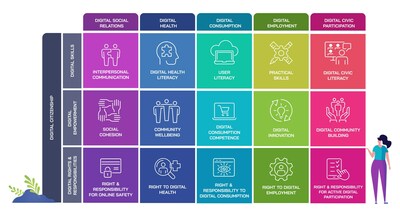New MIT Sloan study applies gamification techniques to improve online teaching techniques and learning outcomes for students
Press Releases
Apr 02, 2021
CAMBRIDGE, Mass., April 2, 2021 /PRNewswire/ — Online learning offers the opportunity to engage a much broader set of students with different learning styles, and to potentially supercharge outcomes. A new study led by Andrew W. Lo, Professor of Finance at MIT’s Sloan School of Management and Principal Investigator at the MIT Computer Science and Artificial Intelligence Laboratory, finds that educators who borrow ideas and tools from the gaming community can improve their online teaching techniques, and improve learning outcomes for students.
The World of EdCraft: Challenges and Opportunities in Synchronous Online Teaching is co-authored with Sean Willems, Haslam Chair in Supply Chain Analytics at Haslam College and a Visiting Professor of Operations Management at MIT Sloan; and Brian Stevens, Senior Lecturer at the University of Tennessee’s Haslam College of Business. The paper is currently under review at a peer-reviewed journal.
“Teachers around the country, thrown online by surprise because of COVID-19, discovered that using many traditional, in-class teaching techniques didn’t translate as well to an online environment,” said Prof. Lo. “Thanks to evolution, our attention and focus are greatly enhanced when another living creature is physically close by, purely for survival purposes. And it turns out the gaming industry has figured out how to replicate this engagement in an online setting. My co-authors and I realized that this has incredibly powerful implications for online learning.”
The ideas and techniques the researchers borrowed from videogame makers include using strong narratives throughout their lectures, providing students with constant streams of input that engage as many of the senses as possible, and giving them opportunities to join in the action to keep them feeling connected.
For example, to build anticipation for class, Prof. Lo follows the typical gamer’s livestream approach of displaying a countdown timer on the course splash page about 30 minutes before his synchronous lectures start. He also plays upbeat music during the final minutes before class to boost energy levels. In addition, Prof. Lo uses a combination of the “Raise Hand” function in Zoom, polls, breakout sessions, and the chat window to keep students fully engaged at all times, switching tasks and/or scenes once every 15 minutes or so to maintain their attention and interest levels throughout the lecture.
They also found that the lower cost of conducting meetings online provided greater opportunities for networking, mentorship, experiential learning, and career development, based on a course evaluations administered by MIT and the University of Tennessee, along with qualitative feedback from guest speakers and teaching staff. For example, Prof. Lo’s students could opt to moderate “fireside” chats with industry leaders, giving them the chance to network and develop mentors. Students also carried out short-term research projects for healthcare companies, which led to several job interviews.
To quantify the degree of networking facilitated by class interactions, the researchers tracked all class-facilitated first-time meetings throughout the semester. Based on this data, the average number of new contacts made by students was forty-three.
“Gamification could be revolutionary for education, and a godsend for students with more visual and collaborative learning styles,” said Prof. Lo. “Take the chat window, which facilitates the wisdom of the crowd. With technology, we can engage a much broader set of students with diverse learning styles, and supercharge the impact of their efforts. Even after this pandemic is over, there’s no putting this genie back in the bottle.”
Prof. Lo has created an hour-long video available on YouTube detailing how his teaching progressed from the lecture hall to his early struggles in transitioning to online learning to his adaption of gaming techniques that benefited MIT students.
He and his co-researchers used a combination of off-the-shelf software and hardware to create the particular format that suited their individual teaching styles, which they recommend educators do over time as well. Prof. Lo shares how he set up his home studio for online teaching here. Willems, meanwhile, provides a list and tour of his home studio here, and Stevens shares his journey into online teaching, which continues in a second video that also highlights his home studio set-up.
About the MIT Sloan School of Management
The MIT Sloan School of Management is where smart, independent leaders come together to solve problems, create new organizations, and improve the world. Learn more at mitsloan.mit.edu.
For further information, contact:
Paul Denning
Director of Media Relations
617-253-0576
denning@mit.edu
Patricia Favreau
Associate Director of Media
617-253-3492
pfavreau@mit.edu
![]() View original content to download multimedia:http://www.prnewswire.com/news-releases/new-mit-sloan-study-applies-gamification-techniques-to-improve-online-teaching-techniques-and-learning-outcomes-for-students-301261165.html
View original content to download multimedia:http://www.prnewswire.com/news-releases/new-mit-sloan-study-applies-gamification-techniques-to-improve-online-teaching-techniques-and-learning-outcomes-for-students-301261165.html
SOURCE MIT Sloan School of Management



